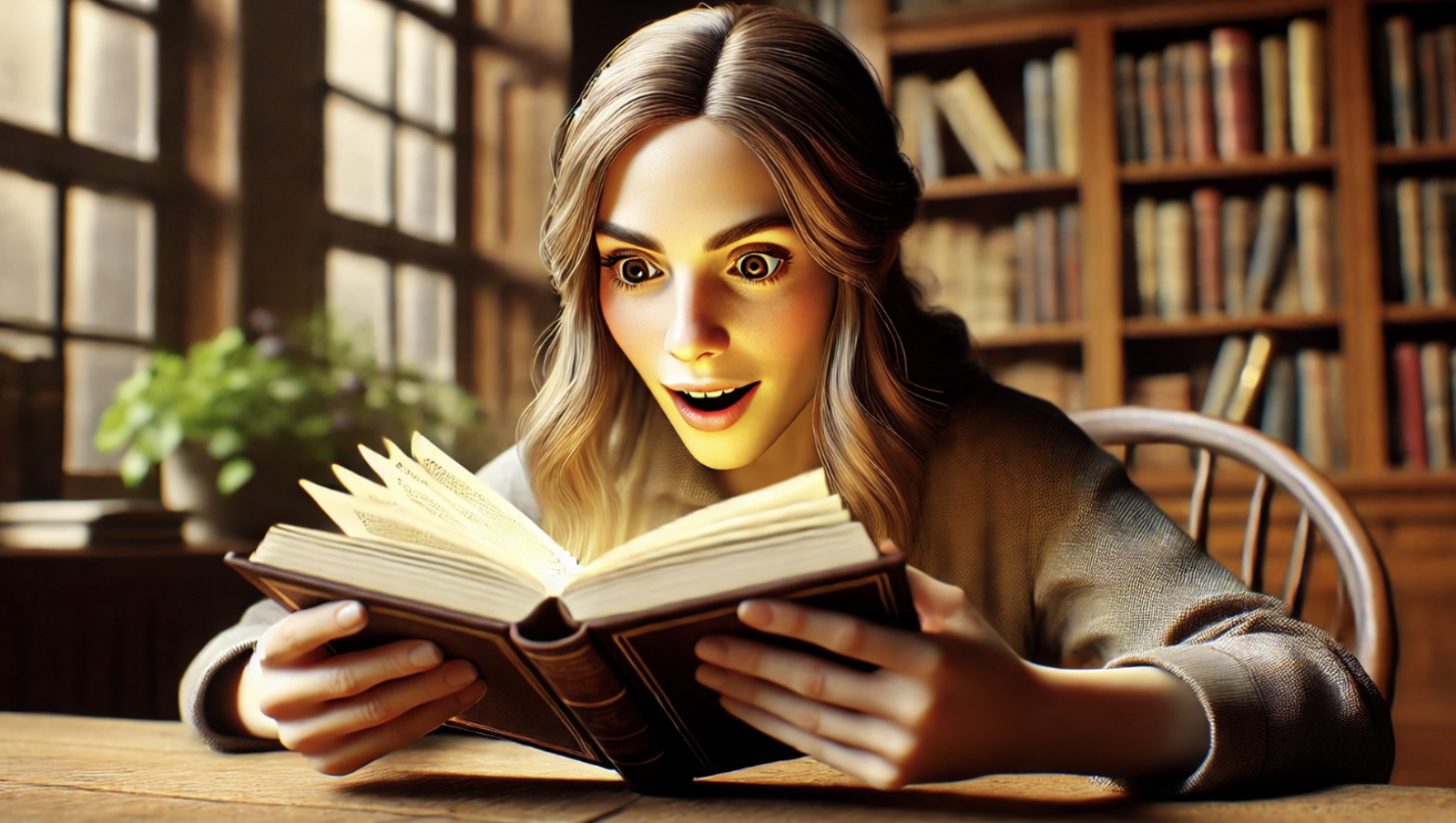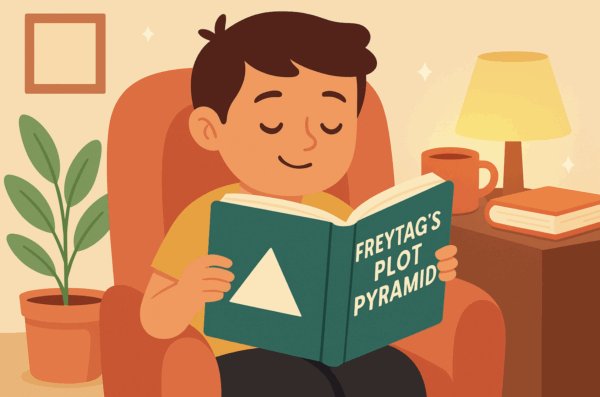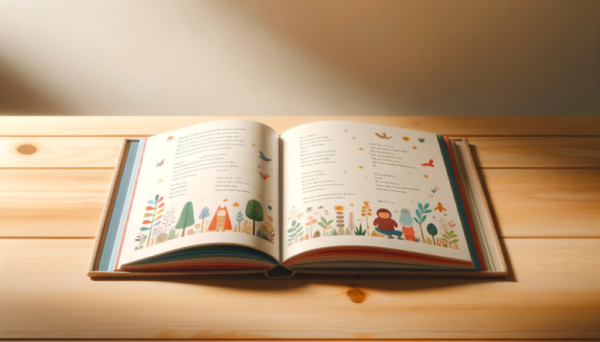Ever read a story that felt like it was saying something more than what was on the page? A simple tale about talking animals, a strange journey through a cave, or a dystopian society gone wrong—yet somehow, it all felt eerily relevant to real life. Welcome to the world of allegory.
An allegory isn’t just a story—it’s a story within a story, a narrative that operates on two levels at once. On the surface, it’s a gripping tale, but underneath, it carries a deeper meaning, often reflecting political, moral, or philosophical ideas. Writers have been using allegories for centuries to critique society, explore human nature, or slip rebellious ideas past censors. From Orwell’s Animal Farm (a seemingly simple barnyard tale that’s actually a biting critique of totalitarianism) to Plato’s “Allegory of the Cave” (a mind-bending metaphor for perception and reality), allegories have shaped literature—and thought—throughout history.
But how does allegory actually work? And how can you spot one in the wild? In this article, we’ll break down the allegory definition and explore allegory examples in literature that prove why this literary device is so powerful. By the end, you’ll be decoding hidden meanings in your favorite books like a pro.
Allegory Definition: More Than Just a Fancy Metaphor
So, what is an allegory? In simple terms, an allegory is a story, poem, or even a whole book where everything—characters, events, settings—stands for something else. It’s a narrative that works on two levels: one literal and one symbolic. Think of it as a literary Trojan horse—the surface story sneaks in, but inside, it’s carrying a deeper message about politics, religion, morality, or human nature.
Now, let’s clear up some confusion: allegories are not the same as metaphors or symbolism. Sure, they’re all about deeper meaning, but here’s the difference:
- A metaphor is a single comparison. (“Time is money.” Quick, simple, done.)
- Symbolism is when an object or action represents something bigger. (A rose symbolizing love, a storm symbolizing chaos—you get the idea.)
- An allegory, on the other hand, is the whole story built around symbolism. Every character, event, and setting serves a deeper meaning.
Take George Orwell’s Animal Farm. On the surface, it’s just about some rebellious barnyard animals. But dig a little deeper, and it’s an allegory for the Russian Revolution, where the pigs represent corrupt leaders and the farm itself mirrors a failing utopia. The famous line—“All animals are equal, but some are more equal than others”—isn’t just farmyard politics; it’s a chilling commentary on real-world power struggles.
If metaphors are sprinkles, allegories are the whole cake—layered, rich, and full of meaning. And trust us, once you start recognizing them, you’ll never read stories the same way again.
Why Do Writers Love Allegory?
Writers love allegory for the same reason spies love secret codes—it’s a way to deliver a powerful message without saying it outright. Allegories let authors slip bold ideas past censors, challenge authority, and make readers think deeply about the world around them. Rather than bluntly stating a controversial opinion, they wrap it in a compelling story, making it both engaging and thought-provoking.
Throughout history, allegories have been used as a literary disguise to criticize governments, challenge religious norms, and explore taboo ideas. Take Plato’s “Allegory of the Cave”, for example—on the surface, it’s about prisoners trapped in a cave watching shadows, but in reality, it’s a profound statement on knowledge, perception, and enlightenment. Similarly, during times of strict censorship, writers have used allegory to mask their critiques. George Orwell’s Animal Farm took aim at Soviet communism, while C.S. Lewis’s The Chronicles of Narnia wove Christian themes into an epic fantasy adventure.
Some allegories are so influential they’ve shaped cultural and political thought. Dante’s Inferno is an allegory for sin and redemption. Margaret Atwood’s The Handmaid’s Tale is a dystopian allegory warning about the dangers of totalitarianism and gender oppression. These stories stay with us not just because they’re entertaining, but because they force us to reflect on reality.
So, why do writers love allegory? Because it’s the ultimate literary power move—a way to entertain, enlighten, and challenge the world, all at the same time.
Classic Allegory Examples in Literature: The Heavyweights
If allegory were a sport, these books would be the Hall of Famers—undisputed champions of layered meaning, social critique, and philosophical depth. These literary heavyweights didn’t just tell great stories; they packed a hidden punch that changed the way we see the world.
- George Orwell’s Animal Farm – A Political Allegory for the Ages
At first glance, Animal Farm is just a story about some rebellious farm animals overthrowing their human owner. But dig a little deeper, and you’ll see Orwell’s brilliant critique of power, corruption, and the failures of communism. The pigs, led by Napoleon (a stand-in for Stalin), start out preaching equality but quickly become the oppressive rulers they once fought against. The chilling line—“All animals are equal, but some are more equal than others”—is a perfect example of how power twists ideals.
- Plato’s “Allegory of the Cave” – The OG of Philosophical Allegories
This isn’t just an allegory; it’s the allegory. In the “Allegory of the Cave,” we find a classic thought experiment, prisoners are chained in a cave, only able to see shadows on the wall. When one escapes and experiences the real world, he returns to tell the others—but they refuse to believe him. Plato’s point? Most people are stuck in ignorance, mistaking illusions for reality. It’s a timeless metaphor for knowledge, enlightenment, and the struggle to break free from false beliefs.
- John Bunyan’s The Pilgrim’s Progress – A Religious Road Trip
Bunyan’s 17th-century classic, The Pilgrim’s Progress, follows a character literally named “Christian” on a symbolic journey toward salvation. Every person he meets, and every place he visits, represents a different spiritual trial—Vanity Fair (worldly temptations), the Slough of Despond (despair), and the Celestial City (heaven). It’s one of the most famous Christian allegories ever written, making complex religious ideas more accessible through storytelling.
- Nathaniel Hawthorne’s The Scarlet Letter – Shame, Sin, and Society
Hawthorne serves to prove in The Scarlet Letter that Hester Prynne’s infamous scarlet “A” isn’t just a punishment—it’s a blazing allegory for guilt, hypocrisy, and judgment in a rigid Puritan society. The novel explores how society shames individuals for moral failings while ignoring its own flaws. Hawthorne masterfully weaves symbolism into every chapter, showing how personal struggles reflect larger social issues.
These literary legends prove that allegory isn’t just a storytelling trick—it’s a way to challenge perspectives, explore deep ideas, and leave a lasting impact on readers for generations.
Hidden Allegories You Might Have Missed
Not all allegories announce themselves with flashing neon signs. Some sneak up on you, disguising their deeper meanings under layers of fantasy, adventure, or even seemingly harmless children’s rhymes. Here are a few books that might have tricked you into thinking they were just simple stories—when in reality, they had something much bigger to say.
- C.S. Lewis’s The Chronicles of Narnia – A Fantasy Packed with Christian Symbolism
Talking animals, magical wardrobes, and epic battles—on the surface, The Chronicles of Narnia is just a thrilling fantasy series. But if you look closer, it’s also a deeply religious allegory. Aslan, the noble lion, is widely seen as a Christ figure, sacrificing himself for the sins of others and later resurrecting. The White Witch? A representation of Satan and temptation. The entire series is filled with Christian themes of faith, redemption, and good vs. evil—just wrapped up in a spellbinding fantasy adventure.
- William Golding’s Lord of the Flies – Civilization vs. Savagery
A bunch of kids crash-land on an island and try to govern themselves. Sounds like an adventure, right? Wrong. Lord of the Flies is a brutal allegory about human nature and the thin veneer of civilization. Ralph represents order and democracy, while Jack embodies primal savagery. And let’s not forget the titular “Lord of the Flies” (a decaying pig’s head), symbolizing the darkness within humanity. Fun fact: Sometimes an innocent story about kids on an island is really about human nature’s darkest tendencies.
- Dr. Seuss’s The Sneetches – A Child-Friendly Allegory About Discrimination
Think Dr. Seuss just wrote goofy rhymes? Think again. The Sneetches is a deceptively simple allegory about racism, prejudice, and social division. The star-bellied Sneetches believe they’re superior to the plain-bellied ones—until a businessman profits off their insecurities by offering star removals and additions. In the end, they realize how ridiculous their divisions were, making this book an early lesson in equality and acceptance.
These stories may seem like light reading, but their hidden allegories pack a serious punch. Sometimes, the most innocent tales hold the deepest truths.
Writing Your Own Allegory: Tips & Tricks
So, you want to write an allegory? Excellent choice! Crafting an allegory is like creating a literary puzzle—one where your story works on two levels: an engaging surface plot and a hidden meaning beneath. Here’s how to do it like a pro:
1. Start with a Big Idea
Every great allegory begins with a deeper message. What do you want to explore? Power and corruption? Social injustice? The meaning of life? Allegories thrive on universal themes that make readers think.
2. Build Your Symbolic World
Characters, settings, and events should all represent something bigger. If you’re writing an allegory about environmental destruction, your characters could be animals fighting against an expanding mechanical city. If your theme is government control, your setting could be a world where people are literally numbered instead of named.
3. Keep the Surface Story Engaging
An allegory should be readable as a story first. If the hidden meaning is too obvious, it feels like a lecture. If it’s too subtle, readers might miss it entirely. Strike the balance—give clues, but don’t spell everything out.
Example – A Colorful Allegory:
Imagine a world where people are assigned colors at birth. Red-colored citizens get the best jobs, while blue-colored ones are treated as second-class. On the surface, it’s a dystopian novel—but underneath, it’s an allegory about racial or social inequality.
Writing an allegory is about making readers think without hitting them over the head with the message. So, go ahead—create a world that says more than meets the eye!
The Power of Allegory in Literature
Allegory isn’t just a storytelling trick—it’s a literary powerhouse. It allows writers to disguise bold ideas beneath engaging plots, challenge the status quo, and make readers think long after they’ve turned the last page. Whether it’s Orwell exposing political corruption, Golding revealing the fragility of civilization, or Dr. Seuss teaching kids about equality, allegories have shaped literature—and society—for centuries.
Now that you know how to spot them, take a fresh look at your favorite books. Is that dystopian novel actually about modern-day politics? Is that fantasy adventure really a commentary on morality? Once you start recognizing allegories, you’ll never read the same way again.
What’s your favorite allegory? Allow it to inspire you and your work, and you’re on your way to success! If you’re an aspiring writer ready to craft your own allegory, Spines is here to help—whether it’s refining your ideas, structuring your plot, or making sure your message lands just right. Join our community of storytellers and start weaving deeper meaning into your writing today!
Your Publishing Journey Awaits – Start NowFAQs – Allegory in Literature
Q1: What is an example of an allegory poem for students?
A great allegory example for students is Edmund Spenser’s The Faerie Queene. This epic poem isn’t just about knights and mythical creatures—it’s an allegory in literature that represents virtues like holiness and temperance. Another well-known allegory example is William Blake’s The Chimney Sweeper, which symbolically critiques child labor and social injustice. These poems work on two levels: a surface story and a hidden message, making them classic examples of allegory in literature.
Q2: How can you tell if a story is an allegory?
To identify an allegory in literature, look for:
- Symbolic characters and events – Does everything stand for something bigger?
- A deeper meaning – Is the story really about politics, morality, or society?
- A complete narrative – Unlike simple metaphors, an allegory example unfolds over an entire story.
If the plot seems to mirror real-world issues or historical events, chances are you’re reading an allegory example in literature!
Q3: What is an example of an allegory in movies?
Movies use allegory just like books! A famous allegory example is The Matrix, which isn’t just a sci-fi action film—it’s a philosophical allegory about reality, control, and enlightenment, much like Plato’s “Allegory of the Cave.” Another example is The Lion King, which works as an allegory for leadership and the cycle of power.
Q4: Is a fairy tale an allegory?
Not all fairy tales are allegories, but many contain allegory examples in literature. Hansel and Gretel can be seen as an allegory for survival and greed, while Beauty and the Beast has been interpreted as an allegory for inner beauty and transformation. If a fairy tale has a clear moral or symbolic meaning beyond the surface story, it might be an example of allegory in literature!
Q5: What is the most famous allegory of all time?
One of the most famous examples is Plato’s “Allegory of the Cave.” This philosophical masterpiece uses the image of prisoners in a cave mistaking shadows for reality to symbolize ignorance and enlightenment. In fiction, George Orwell’s Animal Farm is one of the most widely recognized allegory examples, representing power and corruption.
Q6: What is the difference between simile and allegory?
A simile is a short comparison using “like” or “as” (e.g., “Her smile was as bright as the sun”). An allegory, on the other hand, is an entire story where everything—characters, settings, and events—symbolizes a deeper meaning. If a simile is a single puzzle piece, an allegory example is the entire puzzle!








